SOLUTIONS MANUAL
Second Edition
Data
Networks
DIMITRI BERTSEKAS
Massachusetts Institute a/Technology
ROBERT GALLAGER
Massachusetts Institute a/Technology
IIPRENTICE HALL. Englewood Cliffs. New Jersey 07632
�
•
© 1993 by PRENTICE-HALL, INC.
A Paramount Communications Company
Englewood Cliffs. New Jersey 07632
All rights reserved
10 9 8 7 6 5 4 3
ISBN 0-13-200924-2
Printed in the United States of America
�
CHAPTER 3 SOLUTIONS
3.1
A customer that carries out the order (eats in the restaurant) stays for 5 mins (25 mins).
Therefore the average customer time in the system is T = 0.5*5 + 0.5*25 = 15. By Little's
Theorem the average number in the system is N = A*T =5*15=75.
3.2
We represent the system as shown in the figure. The number of fl1es in the entire system is
exactly one at all times. The average number in node i is AiRi and the average number in
node 3 is'IolPl + A2P2. Therefore the throughput pairs (AhA2) must satisfy (in addition to
nonnegativity) the constraint
If the system were slightly different and queueing were allowed at node 3, while
nodes 1 and 2 could transmit at will, a different analysis would apply. The transmission
bottleneck for the files of node 1 implies that
Similarly for node 2 we get that
1
A S -
}
R}
Node 3 can work on only one file at a time. If we look at the flle receiving service at node 3
as a system and let N be the average number receiving service at node 3, we conclude from
Little's theorem that
�
and N S 1
This implies that
AIPI + A
P2 S 1
2
3.3
Working
Machines ...-.
R
Machines
.Waiting
Repair
Q
Repairmen
We represent the system as shown in the figure. In particular, once a machine breaks
down, it goes into repair if a repairperson is available at the time, and otherwise waits in a
queue for a repaiIperson to become free. Note that ifm=1 this system is identical to the one
of Example 3.7.
Let Abe the throughput of the system and let Q be the average time a broken down
machine waits for a repairperson to become free. Applying Little's theorem to the entire
system, we obtain
A(R+Q+P) =N
from which
A(R+P) S N
(1)
(2)
Since the number of machines waiting repair can be at most (N-m), the average waiting
time AQ is at most the average time to repair (N-m) machines, which is (N-m)P. Thus,
from Eq. (1) we obtain
A(R+ (N - m)P + P) ~ N
Applying Little's theorem to the repairpersons, we obtain
APSm
(3)
(4)
�
The relations (2)-(4) give the following bounds for the throughput A
'1 < . {m N }
R + (N - m +1)P ~ I\. - nun p 'R + P
N
.....
(5)
Note that these bounds generalize the ones obtained n Example 3.7 (see Eq. (3.9».
By using the equation T=N/A. for the average time between repairs, we obtain from Eq. (5)
min{NP/m,R + P} S; T S; R + (N - m +1)P
3.4
IfAis the throughput of the system, Little's theorem gives N = AT, so from the relation T=
a + J3N2 we obtain T = a +J3A.2T2 or
A=VTrr;
(1)
This relation betweeen A. ands T is plotted below.
~=2a
T
The maximum value of A. is attained for the value 1"" for which the derivative of (T - a)/J3T2
is zero (or 1/(131'2) - 2(T - a)/(J3T3) = 0). This yields 1"" = 2a and from Eq. (1), the
corresponding maximal throughput value
A* =_1_vap
(2)
(b) When A. < A.", there are two corresponding values of T: a low value corresponding to an
uncongested system where N is relatively low, and a high value corresponding to a
congested system where N is relatively high. This assumes that the system reaches a
steady-state. However, it can be argued that when the system is congested a small increase
in the number of cars in the system due to statistical fluctuations will cause an increase in
the time in the system, which will tend to decrease the rate of departure of cars from the
system. This will cause a further increase in the number in the system and a funher increase
in the time in the system, etc. In other words, when we are operating on the right side of
�
the curve of the figure, there is a tendency for instability in the system, whereby a steady
state is never reached: the system tends to drift towards a traffic jam where the car depature
rat~ from the system tends towards zero and the time a car spends in the system tends
towards infinity. Phenomena of this type are analyzed in the context of the Aloha
multiaccess system in Chapter 4.
3.5
The expected time in question equals
E{Time} = (5 + E{stay of 2nd student})*P{ 1st stays less or equal to 5 minutes}
+ (E(stayof 1st Istay of 1st ~ 5} + E{stay of2nd})* .
P{1st stays more than 5 minutes}.
We have E(stay of 2nd student} = 30, and, using the memoryless property of the
exponential distribution,
E{stay of 1st I stay of lst ~ 5} = 5 + E(stay of 1st} = 35.
Also
P {1st student stays less or equal to 5 minutes} = 1 - e-S/30
P {1st student stays more than 5 minutes} = e-S/3o.
By substitution we obtain
E{Time} = (5 + 30)*(1 - e-S/3o) + (35 + 30)* e-SI3O =35 + 30*e-SI30 = 60.394.
3.6
(a) The probability that the person will be the last to leave is 1/4 because the exponential
distribution is memoryless, and all customers have identical service time distribution. In
particular, at the instant the customer enters service, the remaining service time of each of
the other three customers served has the same distribution as the service time of the
customer.
(b) The average time in the bank is 1 (the average customer service time) plus the expected
time for the first customer to finish service. The latter time is 1/4 since the departure
process is statistically identical to that of a single server facility with 4 times larger service
rate. More precisely we have
P {no customer departs in the next t mins} =P {I st does not depart in next t mins}
* P{2nd does not depart in next t mins}
* P{ 3rd does not depart in next t mins}
* P{4th does not depart in next t mins}
= (e-t)4 = e-4t.
Therefore
P(the first departure occurs within the nextt mins} = I - e-4t,
�
and the expected time to the next depature is 1/4. So the answer is 5/4 minutes.
(c) The answer will not change because the situation at the instant when the customer
begins service will be the same under the conditions for (a) and the conditions for (c).
3.7
In the statistical multiplexing case the packets of at most one of the streams will wait upon
arrival for a packet of the other stream to finish transmission. Let W be the waiting time ,
and note that 0 ~ W ~ T/2. We have that one half of the packets have system time T/2 + W
and waiting time in queue W. Therefore
Average System Time = (l/2)T/2 + (1/2)(T/2+W) = (T+W)/2
Average Waiting Time in Queue =W/2
Variance of Waiting Time = (1/2)(W/2)4(l/2)(W/2)2 = W2/4.
So the average system time is between T/2 and 3T/4 and the variance of waiting time is
between 0 and T2/16.
3.8
Packet Arrivals
~ 1 J Time
•
r Z
I~
r 1
Fix a packet. Let rl and r2 be the interarrival times between a packet and its immediate
predecessor, and successor respectively as shown in the figure above. Let Xl and X2 be the
lengths of the predecessor packet, and of the packet itself respectively. We have:
P{No collision wi predecessor or successor) = P{rl > Xl' r2 > X2}
= P{rl > Xd P {r2 > X2}·
P{No collision with any other packet} = PI P{r2 > X2}
where
PI = P{No collision with all preceding packets}.
(a) For fixed packet lengths (= 20 msec)
P{rl > Xtl = P{r2 > X2} =e-I..*20 =e-O.OI*20 =e-O.2
PI = P{rl ~tl·
Therefore the two probabilities of collision are both equal to e-O.4 = 0.67.
�
(b) For X exponentially distributed packet length with mean 1/1J. we have
P{rl > Xl} = P{rz
....
>~} =f P{rl > X I Xl = X}p{XI = X}dX
o
....
o
=f e-AXJJe-JiXdX =....JL.
A+Jl
Substituting A= 0.01 and IJ.= 0.05 we obtain P{rl > Xl} = P{rz > Xz}= 5/6, and
P{No collision w/ predecessor or successor} =(5/6)2 = 0.694.
Also PI is seen to be the steady-state probability of a customer finding an empty system in
the M/MIoo system with arrival and service rate Aand J.1 respectively. Therefore PI =e-AIJI. =
e~~.Therefare
.
P{No collision with any other packet} = e~~5/6 =0.682.
3.9
(a) For each session the arrival rate is A= 150/60 = 2.5 packets/sec. When the line is
divided into 10 lines of capacity 5 Kbits/sec, the average packet transmission time is 1/1J.=
0.2 secs. The corresponding utilization factor is p =A/IJ. = 0.5. We have for each session
NQ = p2/(l- p) =05, N = p/(1- p) = I, and T =NIA. = 0.4 secs. For all sessions
collectively NQ and N must be multiplied by 10 to give NQ = 5 and N = 10.
When statistical multiplexing is used, all sessions are merged into a single session with 10
times larger A and J.1.; A= 25, 1I1J. = 0.02. We obtain p = 0.5, NQ = 0.5, N = I, and T =
0.04 secs. Therefore NQt N, and T have been reduced by a factor of 10 over the TOM
case.
(b) For the sessions transmitting at 250 packets/min we have p = (250/60)*0.2 = 0.833
and we have NQ =(0.833)2/(1 - 0.833) =4.158, N =5, T = Nf).. = 5/(250/60) = 1.197 .
·secs. For the sessions transmitting at 50 packetslmiJi we have p = (50/60)*0.2 =0.166, NQ
= 0.033, N = 0.199, T = 0.199/(50/60) =0.239.
The corresponding averages over all sessions are NQ = 5*(4.158 + 0.033) = 21, N =5*(5
+0.199) =26, T = Nf).. = N/(5*AI+ 5*A.z) =26/(5*(250/60)+5*(50/60» =1.038 sees.
When statistical multiplexing is used the arrival rate of the combined session is 5*(250+
50) =1500 packets/sec and the same values for NQ, N, and T as in (a) are obtained.
3.10
�

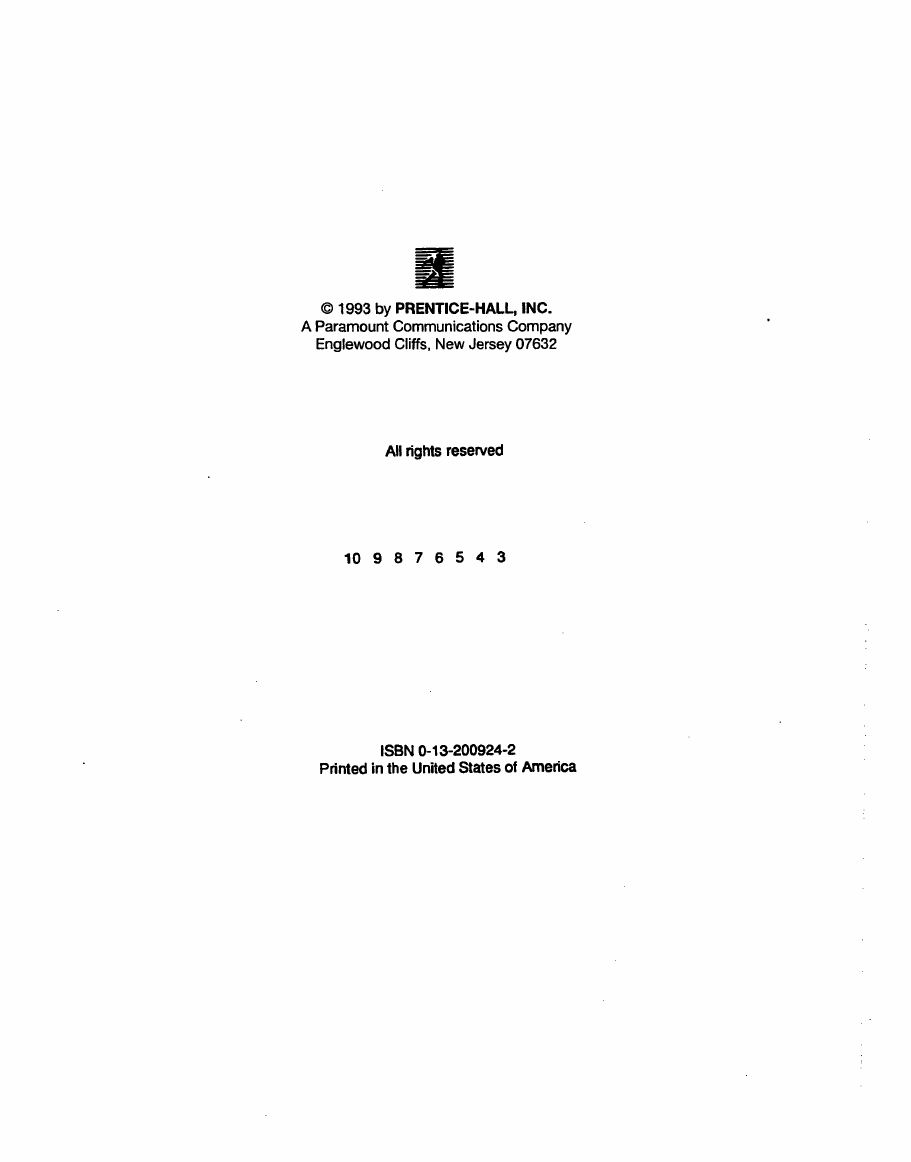
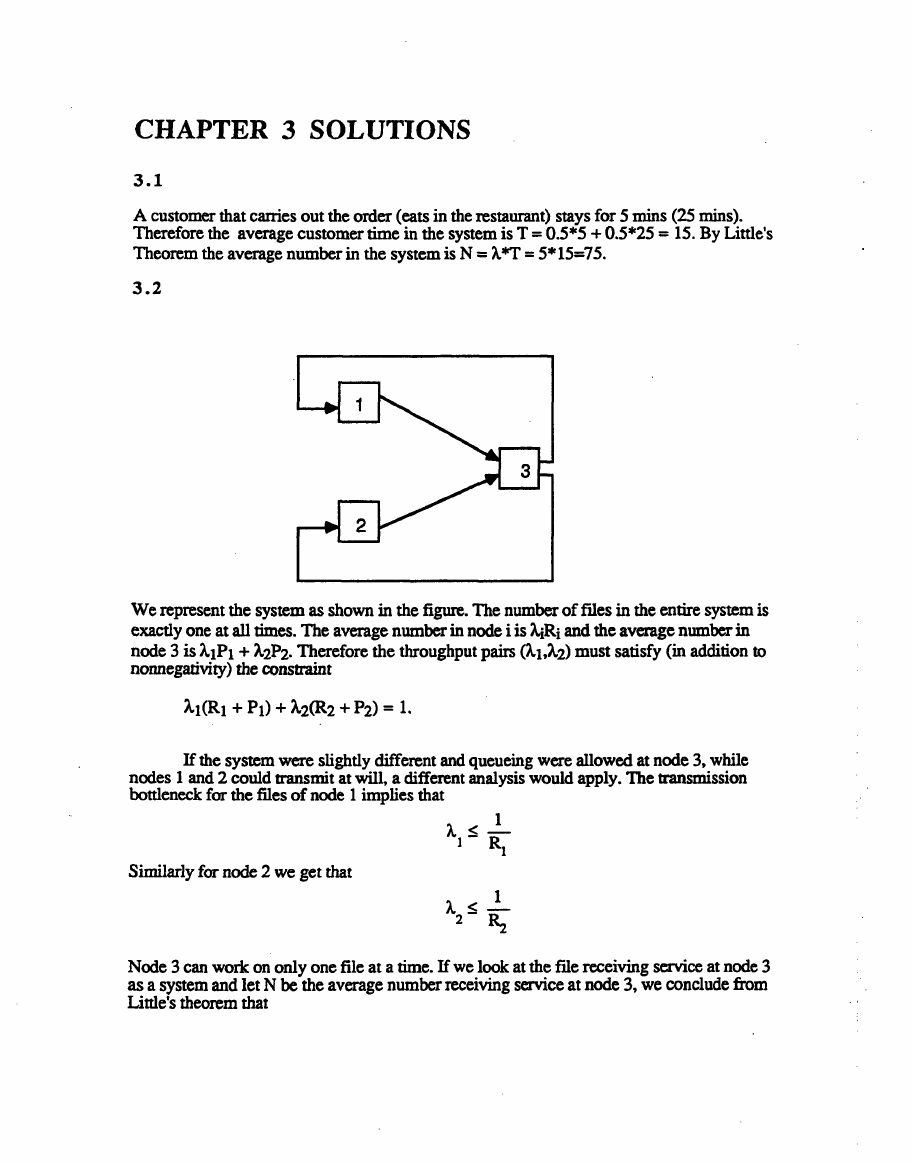

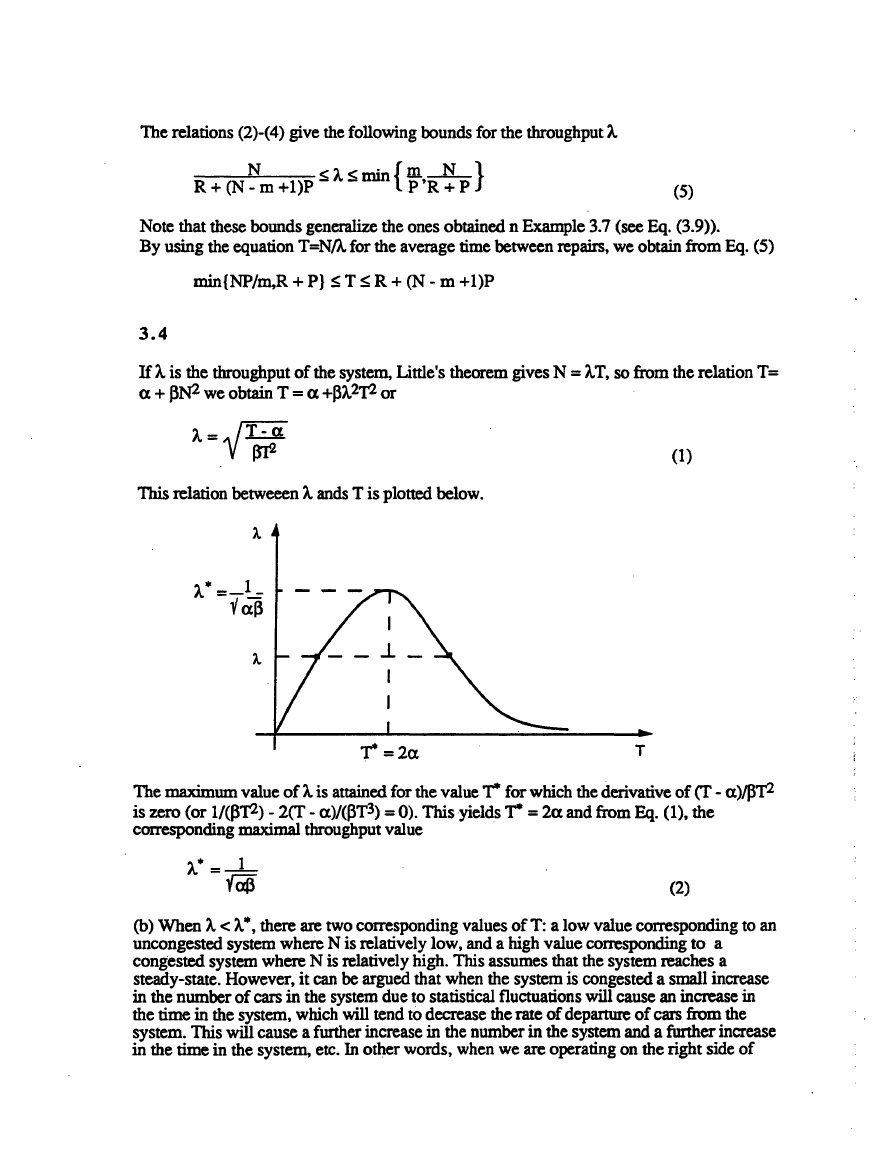
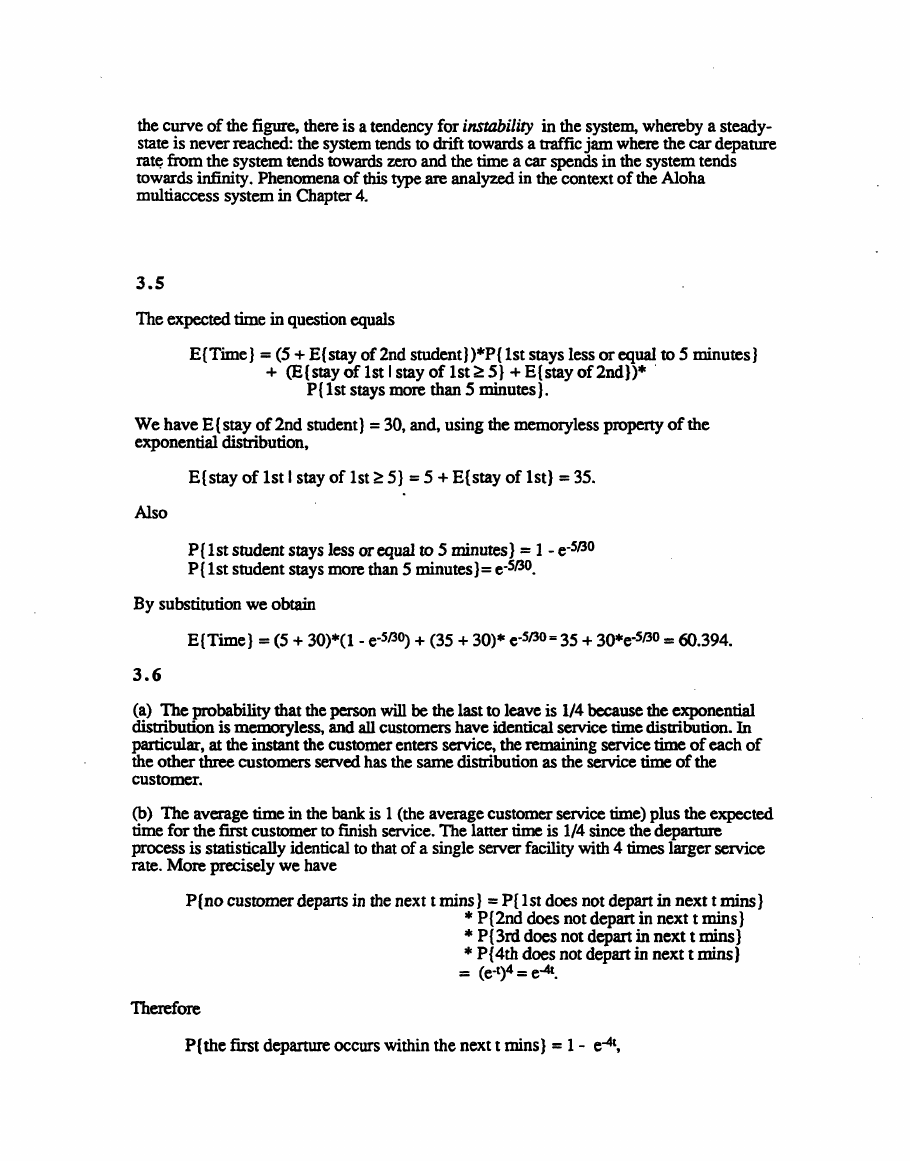
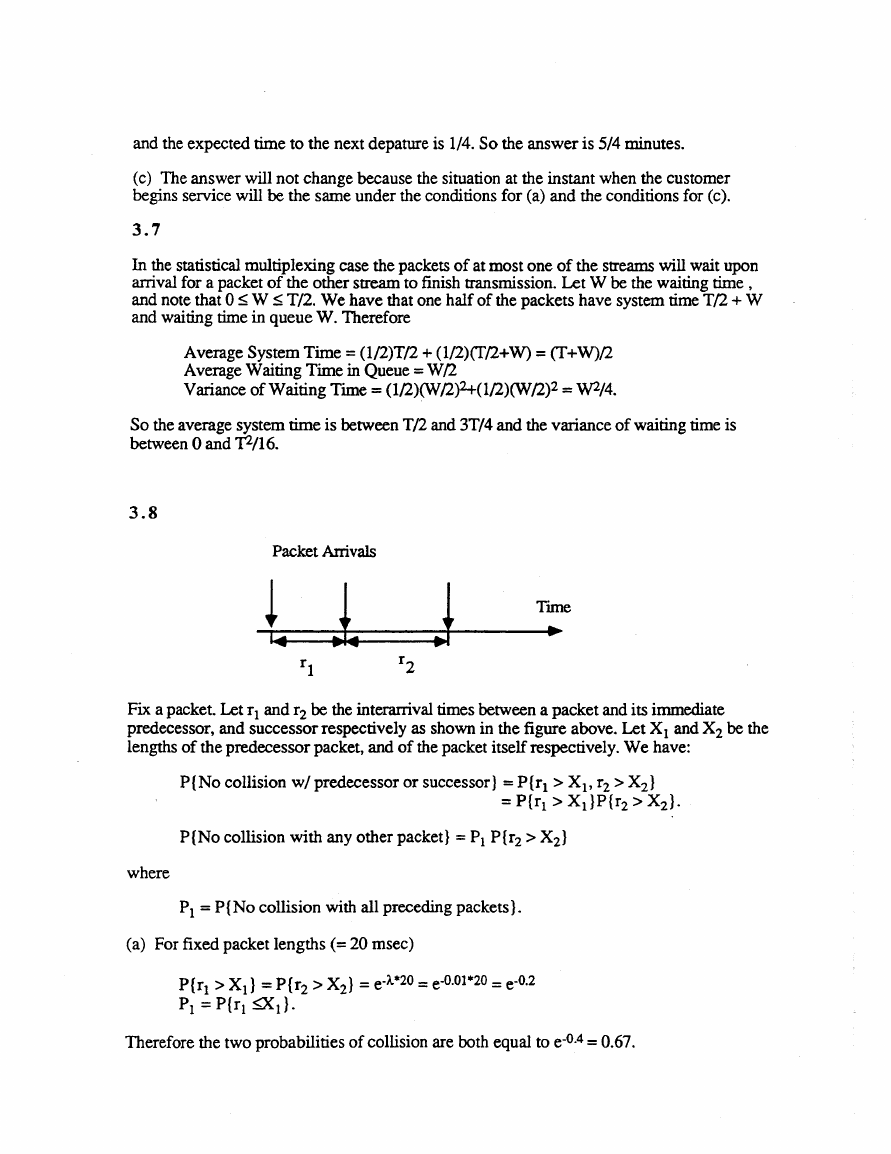
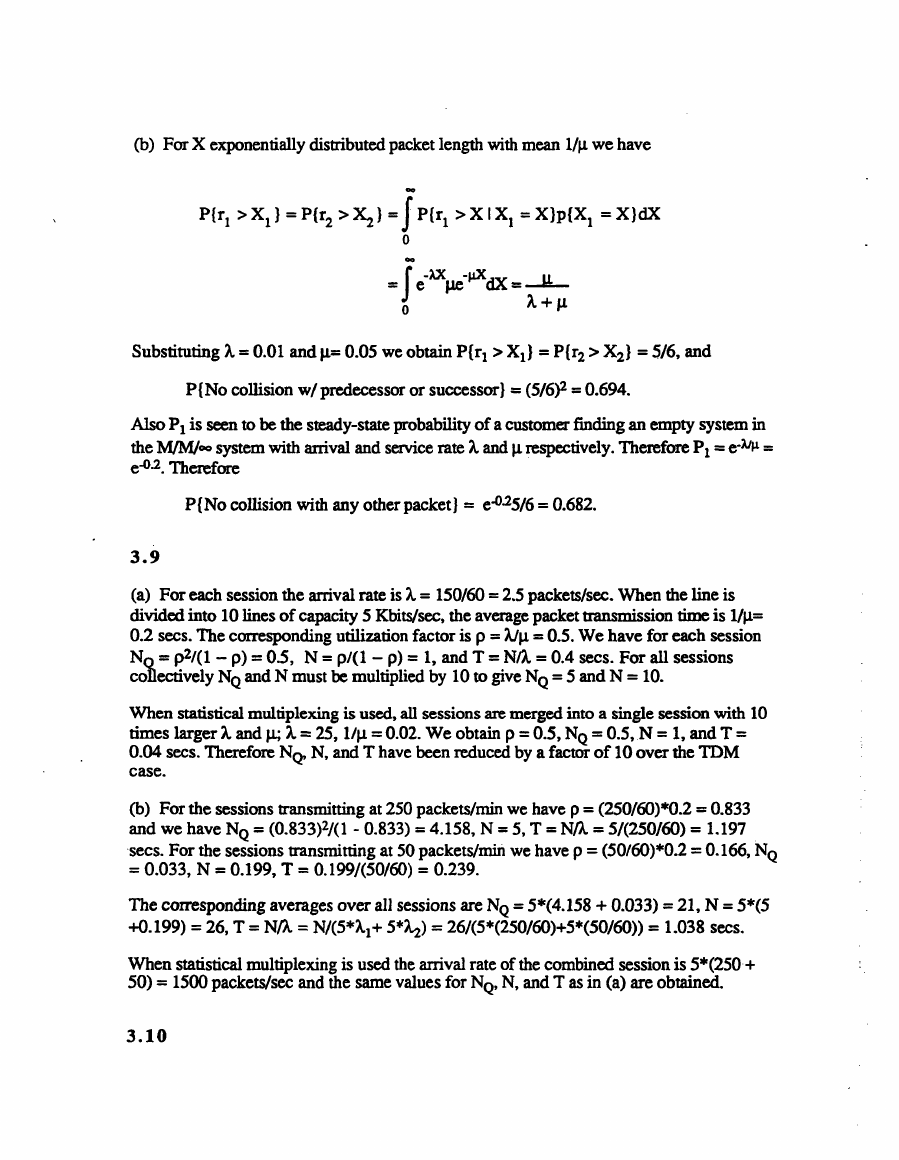








 2023年江西萍乡中考道德与法治真题及答案.doc
2023年江西萍乡中考道德与法治真题及答案.doc 2012年重庆南川中考生物真题及答案.doc
2012年重庆南川中考生物真题及答案.doc 2013年江西师范大学地理学综合及文艺理论基础考研真题.doc
2013年江西师范大学地理学综合及文艺理论基础考研真题.doc 2020年四川甘孜小升初语文真题及答案I卷.doc
2020年四川甘孜小升初语文真题及答案I卷.doc 2020年注册岩土工程师专业基础考试真题及答案.doc
2020年注册岩土工程师专业基础考试真题及答案.doc 2023-2024学年福建省厦门市九年级上学期数学月考试题及答案.doc
2023-2024学年福建省厦门市九年级上学期数学月考试题及答案.doc 2021-2022学年辽宁省沈阳市大东区九年级上学期语文期末试题及答案.doc
2021-2022学年辽宁省沈阳市大东区九年级上学期语文期末试题及答案.doc 2022-2023学年北京东城区初三第一学期物理期末试卷及答案.doc
2022-2023学年北京东城区初三第一学期物理期末试卷及答案.doc 2018上半年江西教师资格初中地理学科知识与教学能力真题及答案.doc
2018上半年江西教师资格初中地理学科知识与教学能力真题及答案.doc 2012年河北国家公务员申论考试真题及答案-省级.doc
2012年河北国家公务员申论考试真题及答案-省级.doc 2020-2021学年江苏省扬州市江都区邵樊片九年级上学期数学第一次质量检测试题及答案.doc
2020-2021学年江苏省扬州市江都区邵樊片九年级上学期数学第一次质量检测试题及答案.doc 2022下半年黑龙江教师资格证中学综合素质真题及答案.doc
2022下半年黑龙江教师资格证中学综合素质真题及答案.doc